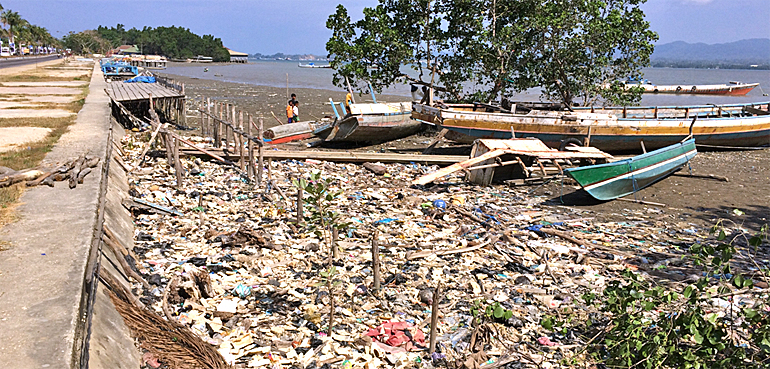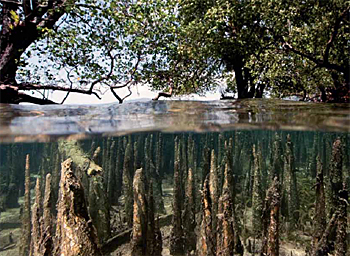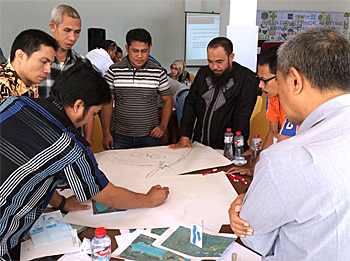Learning Alliance identifies pilot for green coastal protection in Kendari Bay, Indonesia
 Public authorities, universities, banks, NGO’s and private companies who participated in a workshop of the Learning and Action Alliance, expressed the need to start a pilot project to green the Kendari Bay on the Indonesian island of Sulawesi.
Public authorities, universities, banks, NGO’s and private companies who participated in a workshop of the Learning and Action Alliance, expressed the need to start a pilot project to green the Kendari Bay on the Indonesian island of Sulawesi.
The proposed pilot is to convert an area along the bay in a green belt of mangrove forest on artificial reefs. The forest and reefs will provide coastal protection based on the Dutch concept of Building with nature.
The Learning and Action Alliance workshop was organized by Urban Solutions and Unesco-IHE on 12 and 13 February and is part of the Green City Action Program of the Asian Development Bank
 Mangroves catch sediment so the forest soil keeps up with sea level rise in a natural way.
Mangroves catch sediment so the forest soil keeps up with sea level rise in a natural way.
Restoring natural conditions
The third Learning and Action Alliance (LAA) workshop focused on a long-term strategic plan for green growth in Kendari Bay. During the workshop special attention was paid to the pressing water issues resulting from the poor condition of Kendari Bay such as flooding, sedimentation and environmental degradation.
Conclusions were that increased flood protection, controlled deposition of sediments and environmental quality could be achieved by restoring the bay’s natural conditions and developing a new mangrove forest on a artificial sediment reef along the bay.
Strategic plan for green growth
The series of LAA workshops are part of the Green City Action Program of the Asian Development Bank. The aim of the program is to develop an integrated long-term strategic plan for green growth three Indonesian medium sized cities.
As of 2014, under the leadership of Assela Pathirana, Associate Professor of Integrated urban water cycle management, Unesco-IHE is supporting the action programme in the cities of Kendari, Batam and Malang.
These cities are among the fastest growing entities in Indonesia and have shown commitment to green growth.
 Early sketching of a coastal mangrove forest during
Early sketching of a coastal mangrove forest duringa workshop in Kendari in October last year.
Learning environment and showcase
The LAA emphasized the need to start with a pilot as it will serve as a learning environment and showcase.
The pilot will use the principles of the Dutch Building with Nature concept and encompasses an area of 5 ha to be converted into a green belt of mangrove forest on artificial reefs along the bay.
The two universities of Kendari, the Halu Oleo University and Muhammadiyah University, have expressed to support the Green City program in Kendari through the establishment of a joint inter-disciplinary Green Cities research and capacity building programme.
This news item was originally published on the website of Unesco-IHE.
More information
Unesco-IHE
Delft, the Netherlands
+31 15 212 29 21
www.unesco-ihe.org
Asian Development Bank
Green City Action Program
Building with nature
c/o Ecoshape consortium
Dordrecht, the Netherlands
+31 78 6111 099
www.ecoshape.nl/en


